Leche Flan wasn't just dessert, it was our family's love language. Every time I make this silky-smooth Filipino custard dessert, I'm transported back to my Lola's kitchen, where I'd watch her masterfully tilt the llanera over the stove, creating that perfect amber caramel.
This leche flan recipe, which I've perfected over countless family fiestas and celebrations, creates the smoothest, creamiest Leche Flan you'll ever taste.
Once you master this technique of double-straining and getting that caramel just right, you'll never go back to store-bought flan again.
I'm sharing our family's treasured Leche Flan recipe today because, honestly, everyone deserves to know how to make this classic Filipino dessert the right way. After years of trial and error (and some hilariously failed attempts that ended up too bubble-filled or bitter), I've figured out all the secrets to achieving that perfectly smooth, melt-in-your-mouth texture every single time.
This foolproof recipe will help you create the kind of Leche Flan that would make any Lola proud.
Jump to:
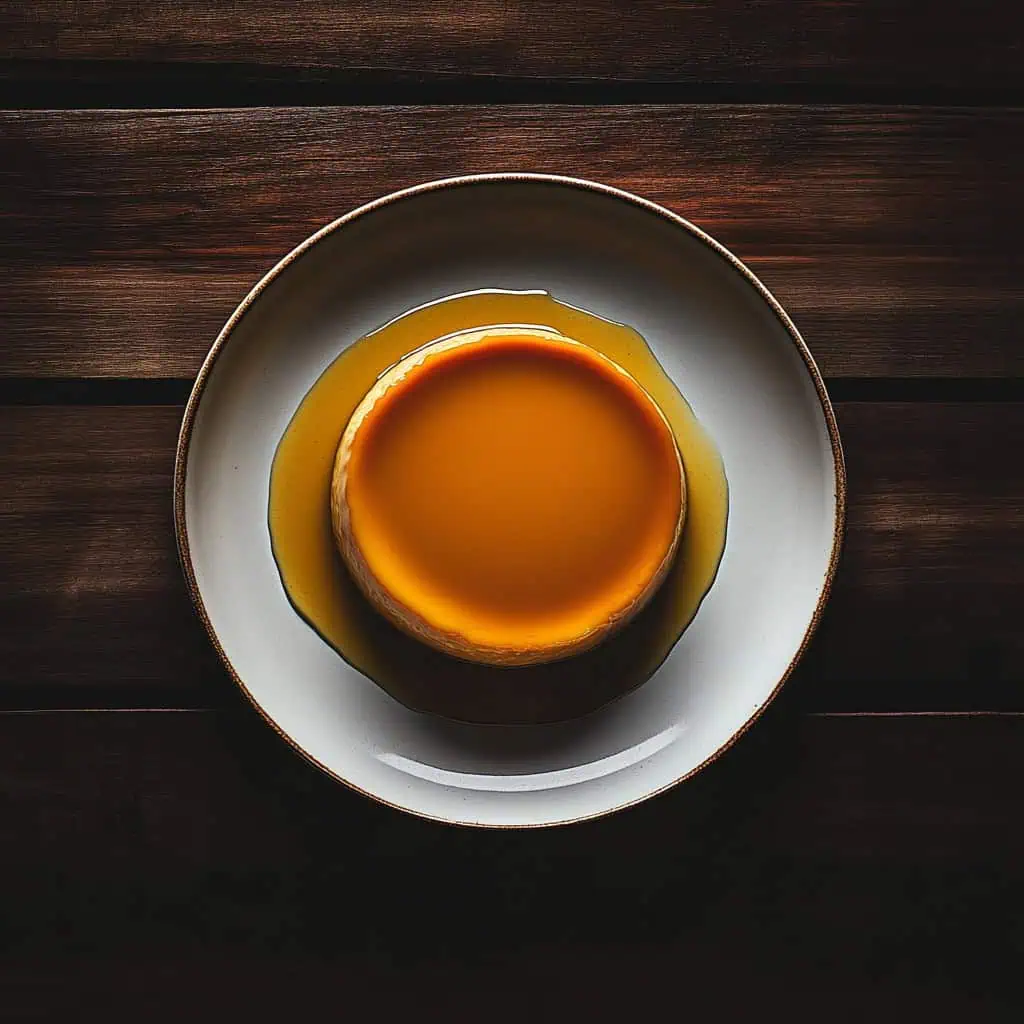
Why You'll Love This Recipe
- Perfectly Silky Texture: Double-straining technique and precise temperature control ensure the smoothest possible consistency
- Balanced Sweetness: The perfect ratio of condensed milk to eggs creates a dessert that's rich but not cloying
- Foolproof Method: Step-by-step instructions with troubleshooting tips guarantee success
- Make-Ahead Friendly: Can be prepared up to 3 days in advance
- Traditional Authenticity: Recipe passed down through generations, with modern precision
- Special Touch: Optional calamansi zest adds a uniquely Filipino brightness
Ingredients
This leche flan recipe uses traditional ingredients that create the perfect balance of richness and sweetness. Egg yolks provide the custard's signature golden color and velvety texture, while avoiding whites prevents a rubbery consistency.
The combination of sweetened condensed milk and evaporated milk creates a perfectly smooth, creamy base without the graininess that can come from using granulated sugar alone.
Optional vanilla extract enhances the flavor without overpowering, while calamansi zest adds a bright, citrusy note that cuts through the richness, a uniquely Filipino touch that elevates this dessert above other caramel custards. The pure white sugar for the caramel creates that perfect amber layer that melts into a luscious sauce when inverted.
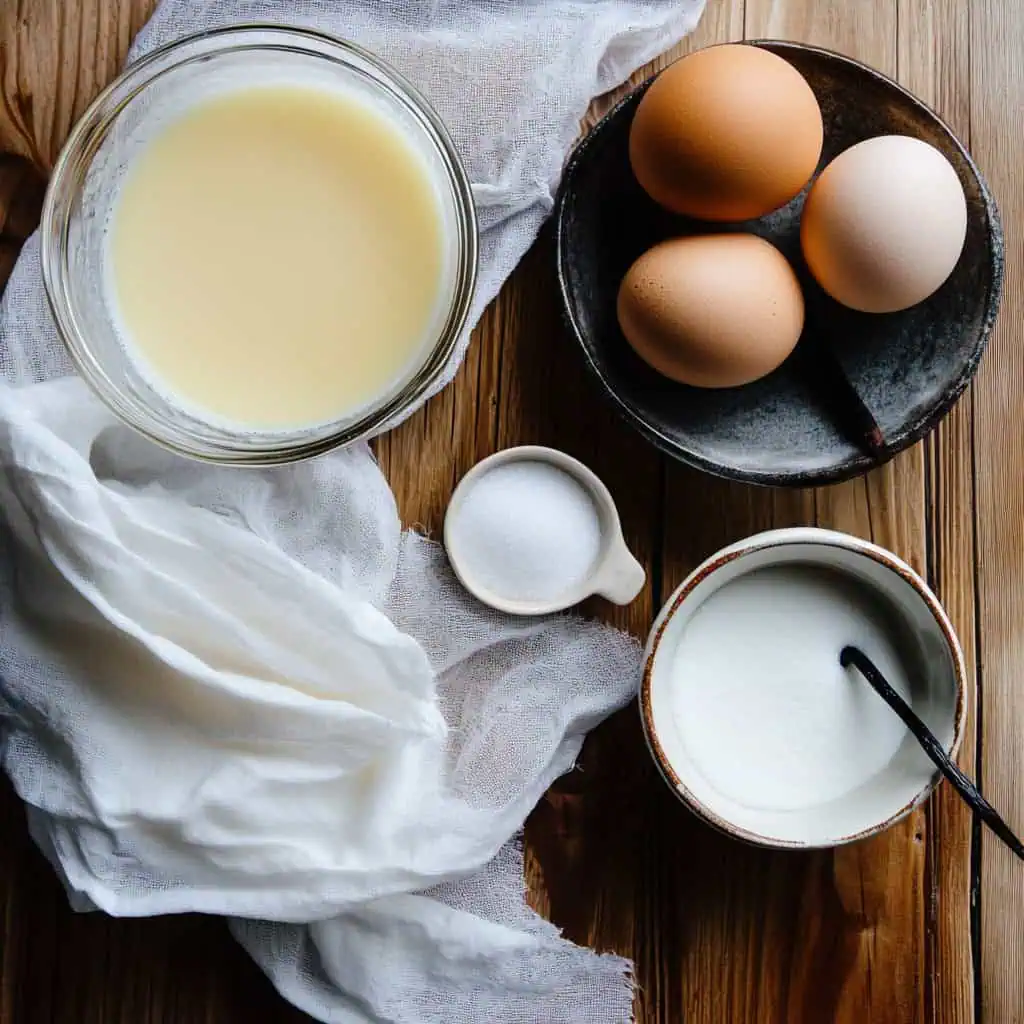
For the Caramel:
- 9 tablespoons white sugar
For the Custard (Pudding):
- 12 large egg yolks
- 1 can (14 oz) sweetened condensed milk
- 1 can (12 oz) evaporated milk
- 1 teaspoon vanilla extract (optional but recommended)
- 1 tablespoon calamansi or dayap zest (optional)
Equipment
- 3 llanera molds (traditional oval metal molds) - These special molds give leche flan its traditional shape and help the caramel distribute evenly
- Cheesecloth or fine-mesh strainer - Essential for achieving the ultra-smooth texture by removing any egg solids
- Large baking pan for water bath - Creates gentle, even heat for perfect custard texture
- Aluminum foil - Covers the flan during baking to prevent over-browning and water splashes
- Tongs - For safely removing hot llaneras from the water bath
- Small saucepan - Alternative for heating the llaneras when making caramel if you don't have a gas stove
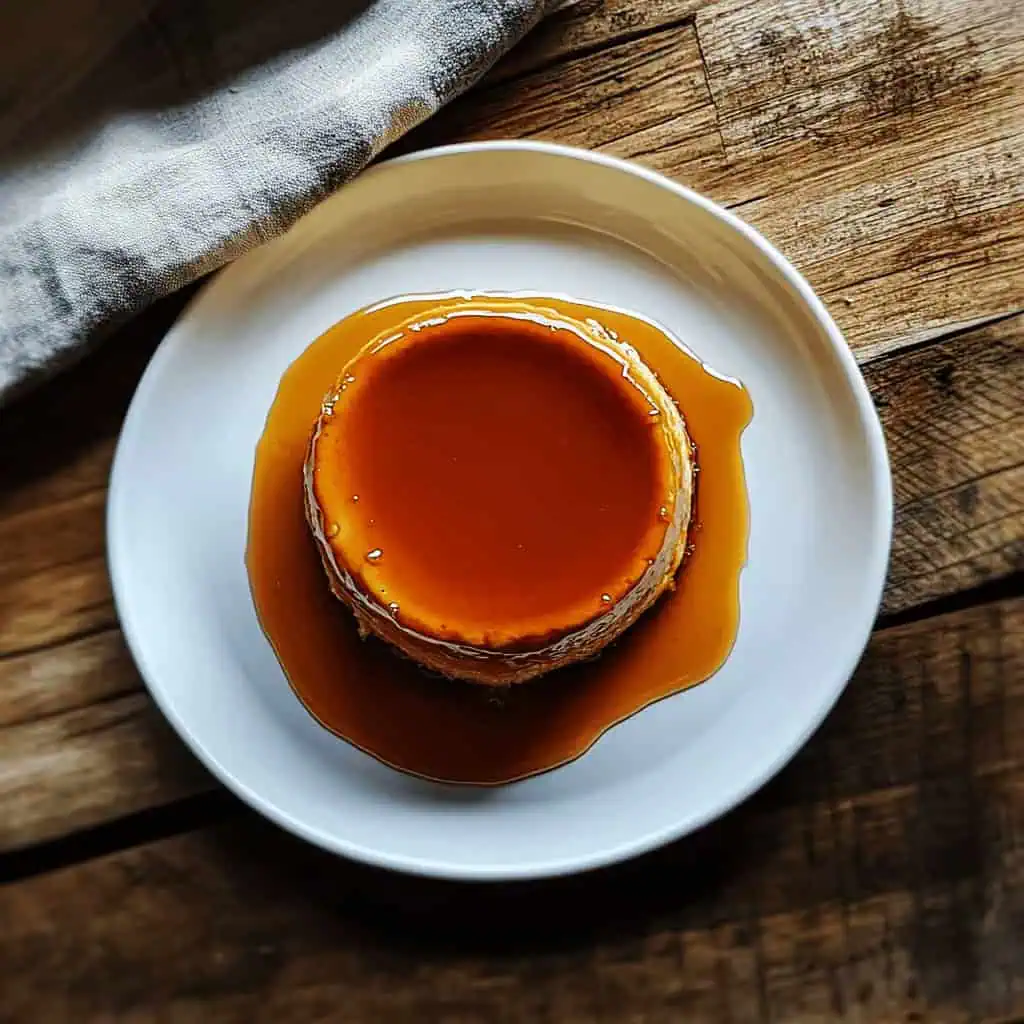
How To Make
- Begin by preheating the oven to 375°F (190°C). Prepare all ingredients at room temperature, especially the egg yolks, as cold ingredients can affect the texture.
- Start with the caramel. Place 3 tablespoons of white sugar in each llanera. Heat each llanera over low flame, tilting continuously until the sugar melts and turns golden amber. Never stir the caramel while cooking. Once done, set aside to let the caramel harden.
- For the custard, carefully separate the egg yolks from whites while eggs are cold (this makes separation easier). Let yolks reach room temperature. Combine the egg yolks with sweetened condensed milk, gently stirring until well blended. Gradually add the evaporated milk, vanilla extract, and calamansi zest if using.
- Strain the mixture through a cheesecloth or fine-mesh strainer twice to ensure the smoothest possible texture. Let the mixture rest for a few minutes to allow any air bubbles to rise to the surface.
- Pour the strained mixture into the prepared llaneras with hardened caramel. Cover each llanera tightly with aluminum foil. Place them in a larger baking pan and create a water bath by carefully pouring hot water halfway up the sides of the llaneras.
- Bake for 50-60 minutes. Test doneness by inserting a knife - it should come out clean. Remove from the water bath using tongs and let cool completely at room temperature. Refrigerate for at least 4 hours or overnight until thoroughly chilled.
- To serve, run a knife around the edges of the flan and invert onto a serving plate. The caramel will flow over the custard as a sauce. Serve chilled.

Tips from Lola's Kitchen
- Egg separation trick: Separate eggs when cold, but let yolks come to room temperature before mixing
- Perfect caramel: Use a low flame and tilt the llanera constantly for even melting. The color should be amber, not dark brown
- Bubble-free custard: After double-straining, let the mixture rest for 10 minutes, then skim any remaining bubbles from the surface
- Water bath wisdom: Use hot (not boiling) water for the water bath, and make sure water reaches halfway up the sides of the llaneras
- Testing doneness: The center should have a slight jiggle (like gelatin) but not be liquid. A knife inserted near the edge should come out clean
- Cooling properly: Always cool completely at room temperature before refrigerating to prevent condensation on top of your flan
Substitutions
- No llaneras? Use ramekins, a round cake pan, or even a heat-proof glass dish
- Egg alternatives: Duck eggs (itlog ng pato) make an incredibly rich flan, use 8-9 instead of 12 chicken eggs
- Milk options: In a pinch, substitute both milks with 2 cups heavy cream and 1 cup whole milk, plus ½ cup sugar
- Citrus variations: Lemon or lime zest can replace calamansi, though the flavor profile will be slightly different
- Vanilla alternatives: Almond extract (¼ teaspoon) or a cinnamon stick infused in the milk can add interesting flavor variations
Troubleshooting
- Bubbles in flan: Your mixture wasn't rested long enough or was poured too quickly. Next time, let it rest 10 minutes before pouring and pour very slowly
- Bitter caramel: Your sugar was overcooked. Watch closely and remove from heat when it reaches amber color, not dark brown
- Curdled texture: The custard was overcooked or the water bath wasn't used properly. Ensure you use a water bath and check earlier for doneness
- Caramel not flowing: The caramel may have been overcooked and hardened too much. Cook it for less time next time, just until golden amber
- Watery custard: Undercooked or improper ratio of ingredients. Cook longer or check your measurements carefully
- Floating caramel: Your caramel didn't fully harden before adding custard. Make sure it's completely set before adding the custard mixture
Storage & Reheating
- Refrigeration: Store covered in the refrigerator for up to 3 days. Keep in the llanera until ready to serve for best results
- Freezing option: While not ideal, you can freeze leche flan for up to 1 month. Thaw overnight in the refrigerator before serving
- Serving temperature: Always serve chilled, straight from the refrigerator for the best texture and flavor
- No reheating: Leche flan should never be reheated as it will break the custard structure. It's designed to be enjoyed cold
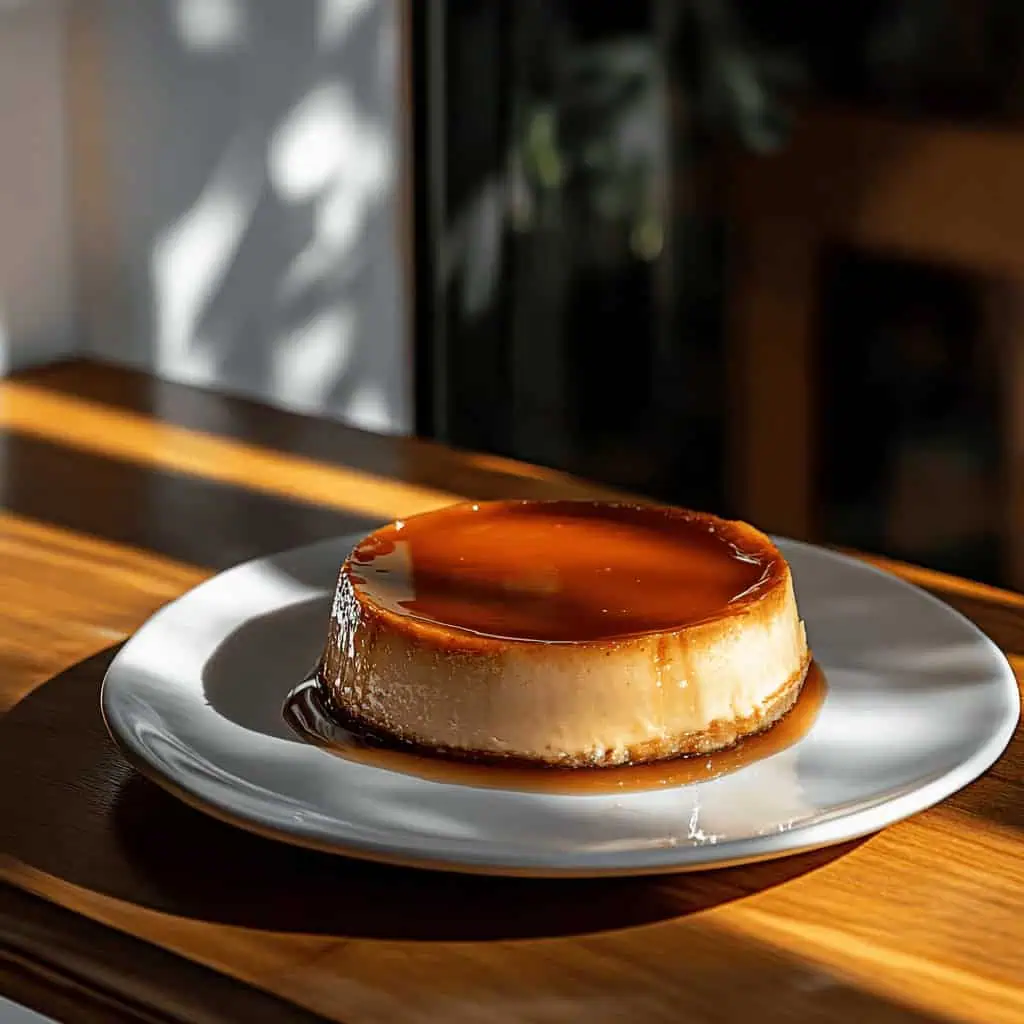
FAQ
Why did my flan curdle?
Curdling happens when eggs cook too quickly at too high a temperature. Always use a water bath, moderate oven temperature, and don't overcook.
Can I make this with whole eggs instead of just yolks?
Traditional Filipino leche flan uses only yolks for the richest texture, but you can use 8 whole eggs instead of 12 yolks for a lighter version.
How do I know when my caramel is done?
The perfect caramel for leche flan should be golden amber, similar to honey. If it smells bitter or turns very dark, it's overcooked.
Why isn't my caramel hardening?
The sugar needs to reach the proper temperature. Make sure you're using enough heat and giving it time to properly melt before removing from heat.
How do I prevent a rubbery texture?
Don't overcook and use the correct egg-to-milk ratio. The flan is done when it has a slight jiggle in the center but isn't liquid.
Can I make mini leche flans?
Absolutely! Use smaller molds and reduce the cooking time to about 30-35 minutes, checking for doneness.
How do I remove air bubbles from my custard?
Double-strain the mixture, let it rest for 10 minutes, then gently tap the filled llaneras on the counter to release trapped air.
What can I do with the leftover egg whites?
Make meringue, macarons, pavlova, or the Filipino dessert silvanas. You can also freeze them for future use.
Related
Looking for other recipes like this? Try these:
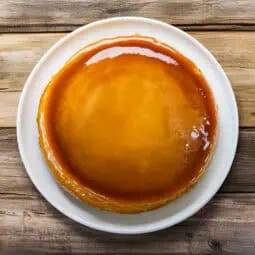
Filipino Leche Flan
Equipment
- 3 llanera molds (traditional oval metal molds)
- Cheesecloth or fine-mesh strainer
- Large baking pan for water bath
- Aluminum foil
- Tongs
Ingredients
For the Caramel (Karamelo):
- 9 tablespoons white sugar asukal
For the Custard (Pudding):
- 12 large egg yolks
- 1 can 14 oz sweetened condensed milk (kondensadang gatas)
- 1 can 12 oz evaporated milk (ebaporadang gatas)
- 1 teaspoon vanilla extract optional but recommended
- 1 tablespoon calamansi or dayap zest optional
Instructions
- Begin by preheating the oven to 375°F (190°C). Prepare all ingredients at room temperature, especially the egg yolks, as cold ingredients can affect the texture.
- Start with the caramel. Place 3 tablespoons of white sugar (asukal) in each llanera. Heat each llanera over low flame (mahinang apoy), tilting continuously until the sugar melts and turns golden amber. Never stir the caramel while cooking. Once done, set aside to let the caramel harden.
- For the custard (pudding), carefully separate the egg yolks from whites while eggs are cold (this makes separation easier). Let yolks reach room temperature. Combine the egg yolks with sweetened condensed milk (kondensadang gatas), gently stirring until well blended. Gradually add the evaporated milk (ebaporadang gatas), vanilla extract, and calamansi zest if using.
- Strain the mixture through a cheesecloth or fine-mesh strainer twice to ensure the smoothest possible texture. Let the mixture rest for a few minutes to allow any air bubbles to rise to the surface.
- Pour the strained mixture into the prepared llaneras with hardened caramel. Cover each llanera tightly with aluminum foil. Place them in a larger baking pan and create a water bath by carefully pouring hot water halfway up the sides of the llaneras.
- Bake for 50-60 minutes. Test doneness by inserting a knife - it should come out clean. Remove from the water bath using tongs and let cool completely at room temperature. Refrigerate for at least 4 hours or overnight until thoroughly chilled.
- To serve, run a knife around the edges of the flan and invert onto a serving plate. The caramel will flow over the custard as a sauce. Serve chilled.
Tips from Lola's Kitchen
- Always use fresh eggs at room temperature
- Never stir the caramel while it's cooking
- Strain mixture twice for ultra-smooth texture
- Test doneness by inserting a knife - it should come out clean
- Let cool completely before refrigerating
Nutrition
The Story Behind Filipino Leche Flan
The beloved Filipino Leche Flan, known locally as "karamelyadong pudding," traces its roots to the Spanish colonial era of the Philippines, where it evolved from the European crème caramel during the 333 years of Spanish rule. While similar custard desserts exist worldwide – from French crème caramel to Spanish flan – the Filipino version stands apart for its distinctively rich and silky texture.
What makes Filipino Leche Flan unique is its use of egg yolks exclusively, rather than whole eggs. This tradition dates back to the Spanish colonial period when egg whites were used in massive quantities to build churches, as egg whites were mixed with lime to create a durable mortar. The resourceful native cooks created this indulgent dessert to utilize the abundance of leftover egg yolks, leading to the characteristically golden color and luxurious texture that defines Filipino Leche Flan today.
In traditional Filipino households, Leche Flan became synonymous with celebration and family gatherings. The distinct oval-shaped llanera molds, originally repurposed from milk cans during the American colonial period, have become iconic vessels for this dessert. The characteristic 'tink' sound of a spoon hitting the llanera has become a beloved signal that dessert is about to be served at Filipino festivities.
Modern interpretations of Leche Flan have spawned countless variations across the Philippine archipelago. From the rich duck egg versions in Pateros to the dayap-infused flans of Southern Luzon, each region has added its own twist to this classic dessert. The dish has even inspired fusion creations like Leche Flan cake, Leche Flan ice cream, and the popular street food "Flan de Leche" puto (steamed rice cake topped with mini flan).
Despite its Spanish origins, Leche Flan has become so deeply embedded in Filipino culture that it's now considered one of the Philippines' most cherished desserts. Its presence at celebrations, from simple family gatherings to elaborate fiestas and holiday celebrations, has cemented its status as a true Filipino cultural icon. Whether served on its own, as a topping for halo-halo, or incorporated into modern dessert innovations, Leche Flan continues to captivate both local and international palates with its silky smooth texture and caramel sweetness.
This recipe preserves the traditional method passed down through generations of Filipino families, while incorporating modern techniques to ensure consistent, restaurant-quality results in your own kitchen. The key lies in respecting the classic preparation methods while understanding the science behind what makes a perfect flan – from the careful caramelization of sugar to the gentle heating of the custard that results in that coveted smooth, silky texture.
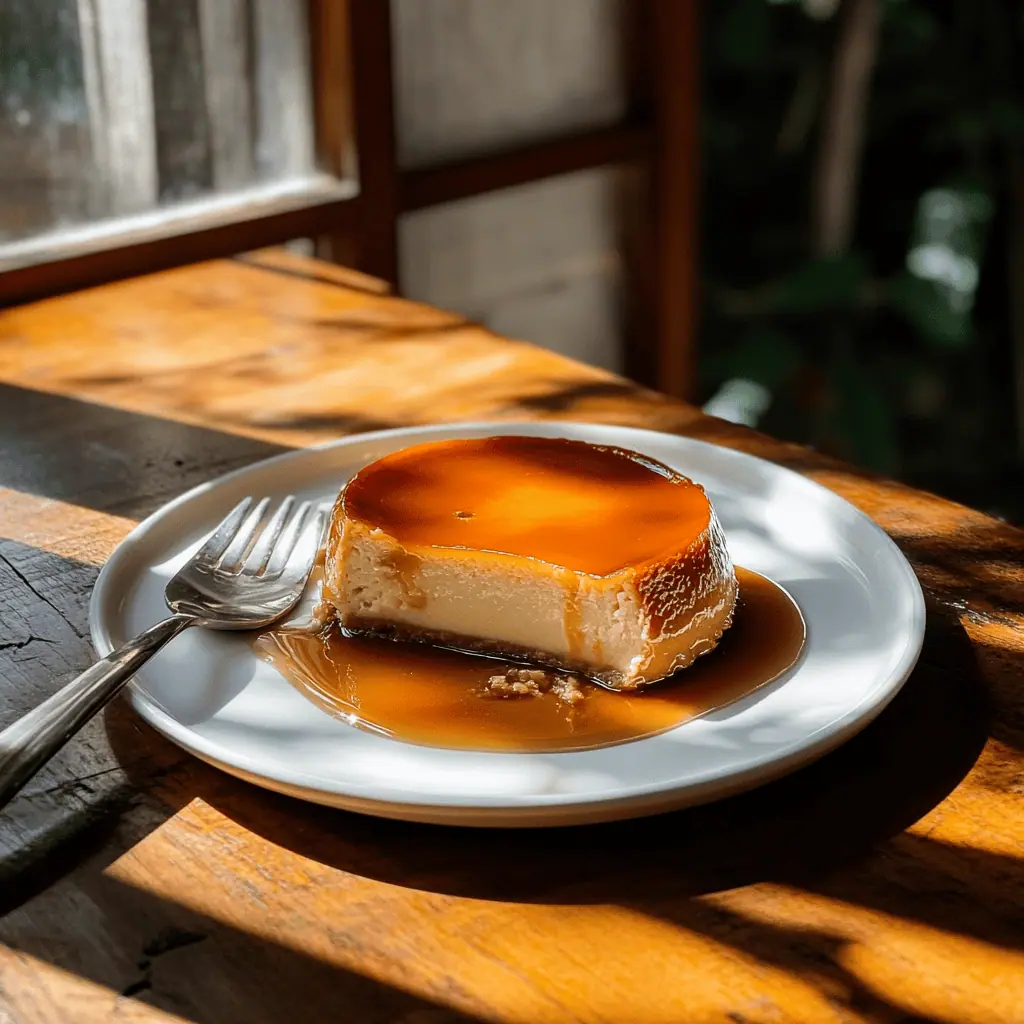

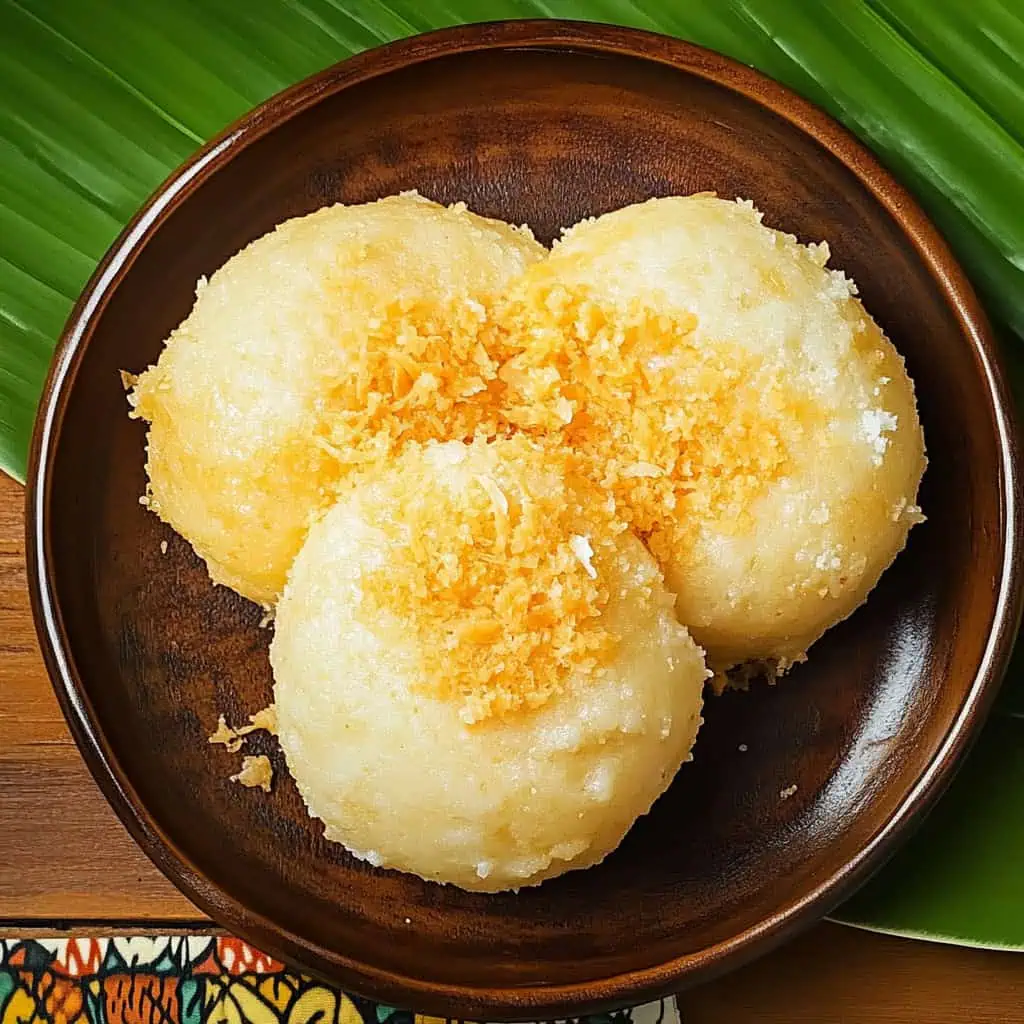
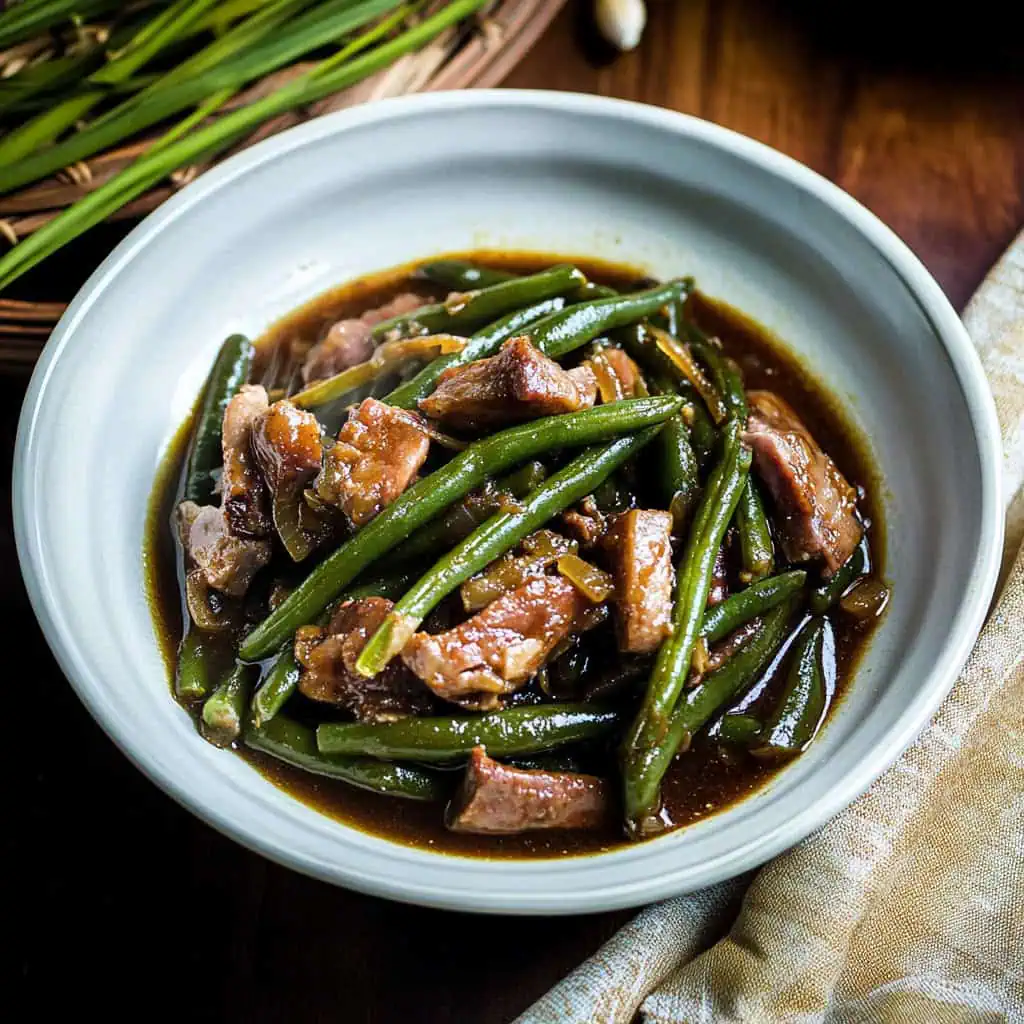
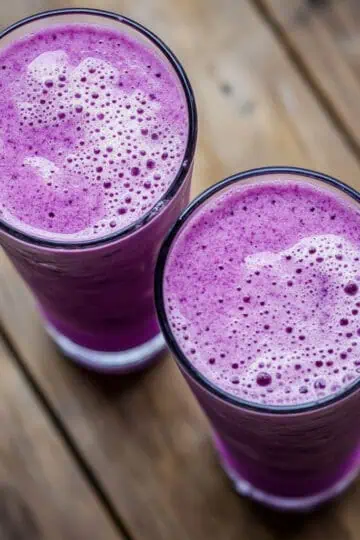
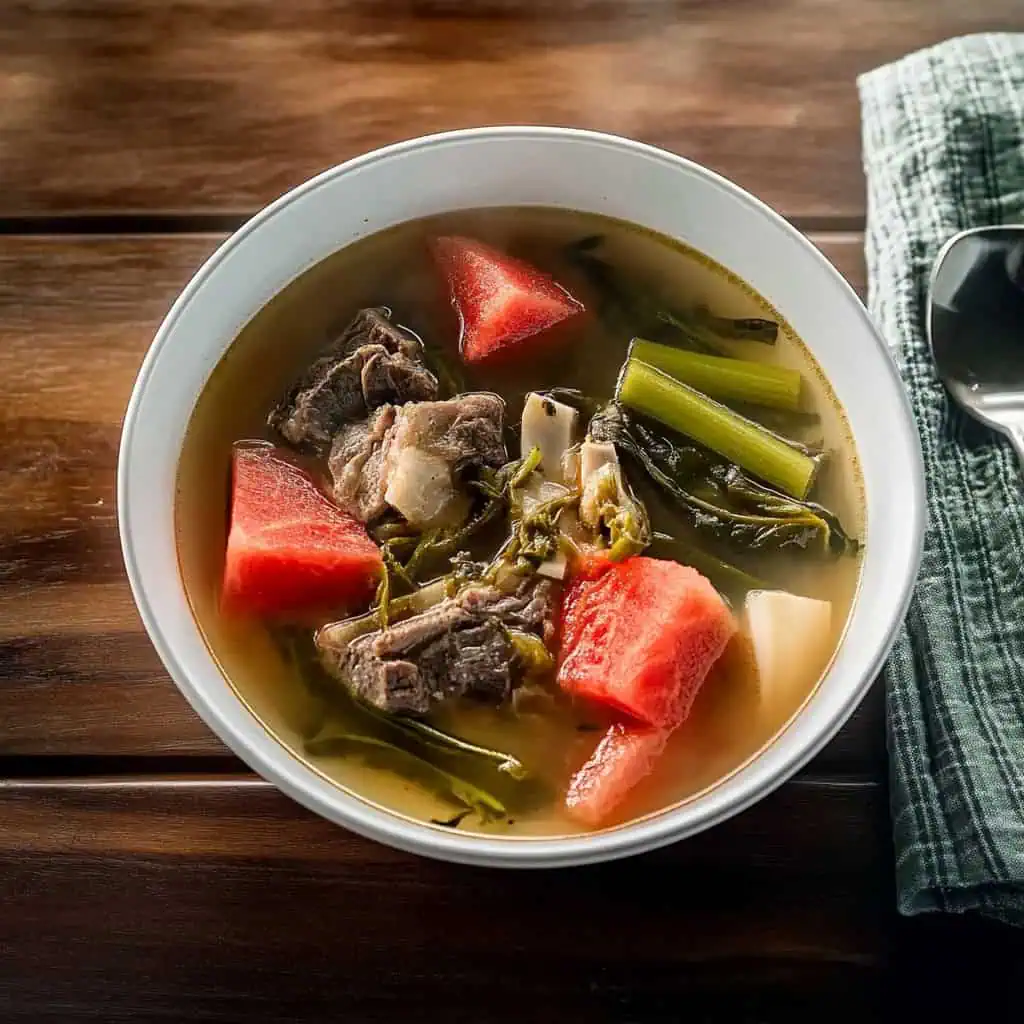

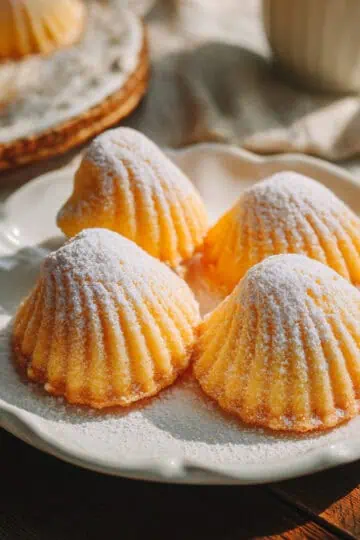
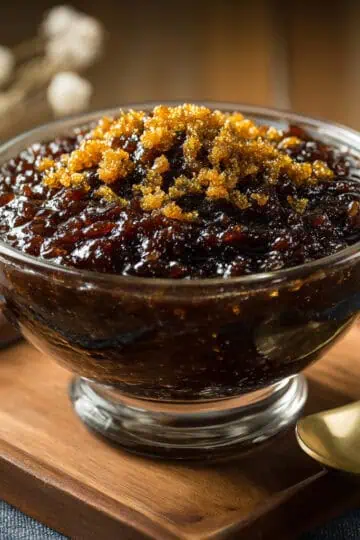
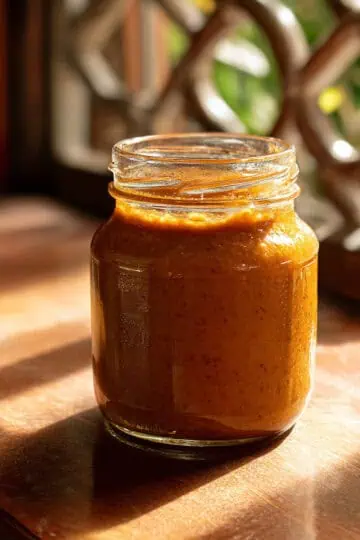
Rolandmaype says
My favorite dessert!
Marilyn Gatdula says
Just the right sweet